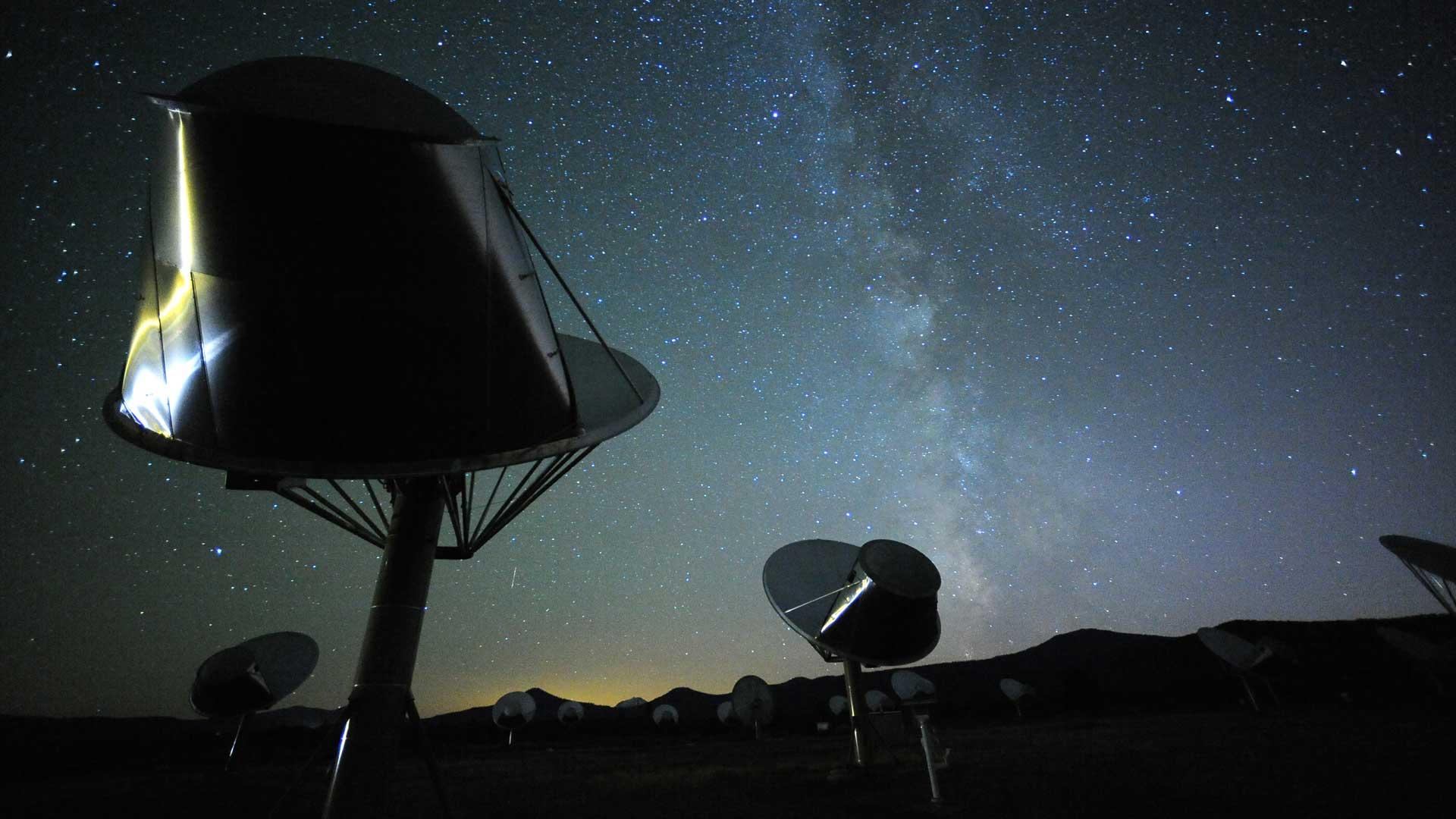In 2017, the Canadian Hydrogen Intensity Mapping Experiment (CHIME) began to gather light from the Universe to address some of the biggest questions and astrophysics and cosmology. Located at the Dominion Radio Astrophysical Observatory (DRAO) in British Columbia, this interferometric radio telescope has been a game-changer for studying Fast Radio Bursts (FRBs), which remain one of the most mysterious cosmic mysteries facing astronomers today.
In the near future, CHIME will be getting an expansion that will help it more accurately identify where FRBs are coming from. This will consist of a new radio telescope outrigger located at the SETI Institute’s Hat Creek Radio Observatory (HCRO), new outriggers near Princeton, British Columbia, and at the Green Bank Observatory in West Virginia. These will work with the main CHIME telescope to localize CHIME-detected FRBs precisely in the night sky.
FRBs are short-lived, intense blasts of energy in the radio spectrum that typically last for only a few milliseconds. The first FRB was detected in 2007 by Duncan Lorimer, an astronomer at West Virginia University (the “Lorimer Burst“). Since then, several hundred FRBs have been detected, and some have even been traced back to their sources. Whereas most events detected to date have been one-off events, some have been repeating in nature.
This has led to multiple theories about what causes them, ranging from magnetars and black holes to cosmic strings left over from the Big Bang and even alien transmissions! Regardless of their true cause, FRBs represent an exciting astronomical phenomenon. Their structure and transient nature also make them an ideal tool for probing the intergalactic medium. As FRBs travel billions of years to reach Earth, they carry the imprint of the material that lies between galaxies.
To say that CHIME has had a radical impact on FRB research would be a massive understatement. Using its four half-cylinder radio dishes, which measure 20×100 m (65.6×328 ft) and are arranged side-by-side, the array can detect 10 to 100 times more FRBs than all other radio telescopes in the world combined. It has also allowed radio astronomers to observe these extremely brief events with exquisite time resolution.
Earlier this year, researchers from McGill University developed a system that allows FRBs to be tracked in real-time. Known as CHIME/FRB VOEvent Service, this system relies on the standardized language Virtual Observatory Event (VOEvent), used since 2006 to report transient astronomical events. This system alerts observatories worldwide when FRBs occur, giving them the chance to train their instruments on the source and conduct follow-up observations.
Nevertheless, CHIME has still had one limitation: its inability to identify an FRB’s origin with any precision. CHIME is hardly alone in this, as the transient nature of FRBs makes them extremely difficult to study and is the reason why only a few have been traced back to their point of origin. The addition of new outriggers to radio observatories partnered with the DRAO will enable this for the first time.
Patrick Boyle, the Senior Project Manager for the CHIME/FRB Outriggers project and Senior Academic Associate in the Department of Physics at McGill University, explained in a recent SETI Institute press release:
“The CHIME telescope can currently locate the position of a fast radio burst to a patch of sky equivalent to the size of the full Moon. With the addition of the three new outrigger telescopes, this patch of sky can be reduced to the size of a quarter held at roughly 40 km.”
The addition of radio telescope outriggers at Hat Creek Radio Observatory (HCRO) – the site of the Allen Telescope Array (ATA) – and the Green Bank Observatory is also expected to enhance CHIME’s abilities to study FRBs. On May 18th, 2021, researchers at ATA made the first-ever detection of an FRB with their radio telescopes. This was the bright double-peaked repeating FRB known as FRB20201124A.
In recent years, the ATA has been undergoing a refurbishment program to upgrade its telescope feeds and digital signal processing system to improve its sensitivity and capabilities. The discovery of FRB20201124A marked the first FRB detection with this nascent system. The addition of the new outrigger as part of wider cooperative efforts with the DRAO and CHIME will increase its capabilities even further.

The SETI Institute will support the construction of the outrigger at the HCRO and is pleased to be participating with the CHIME team. “We are thrilled to welcome the world-class CHIME team to the Hat Creek Radio Observatory,” said Andrew Siemion, the Bernard M. Oliver Chair for SETI at the SETI Institute. “Hosting a CHIME outrigger represents a phenomenal and complementary addition to the HCRO’s science mission.”
Further Reading: SETI
The post Canada's CHIME is Getting More Observatories to Search for Fast Radio Bursts appeared first on Universe Today.
No comments:
Post a Comment